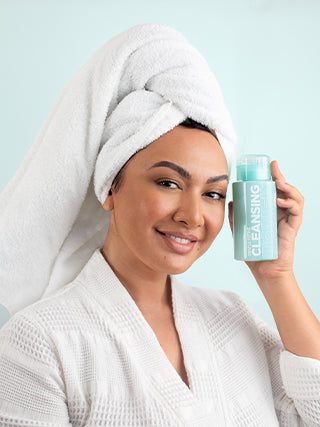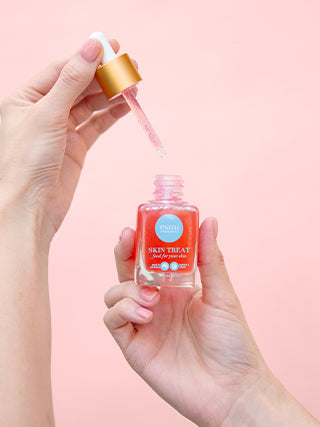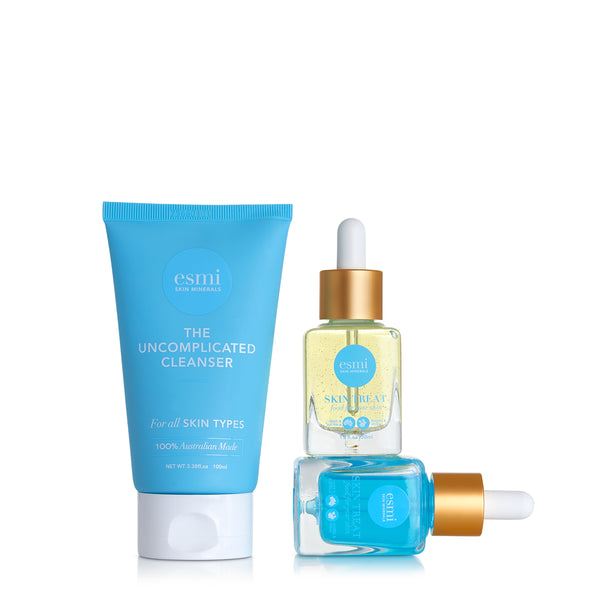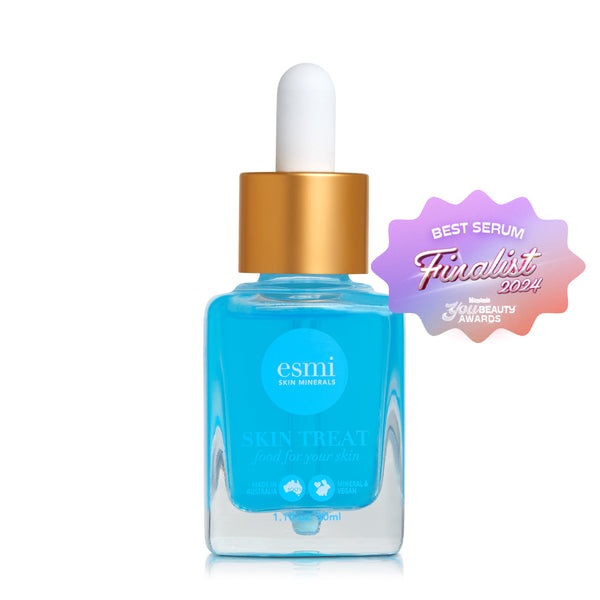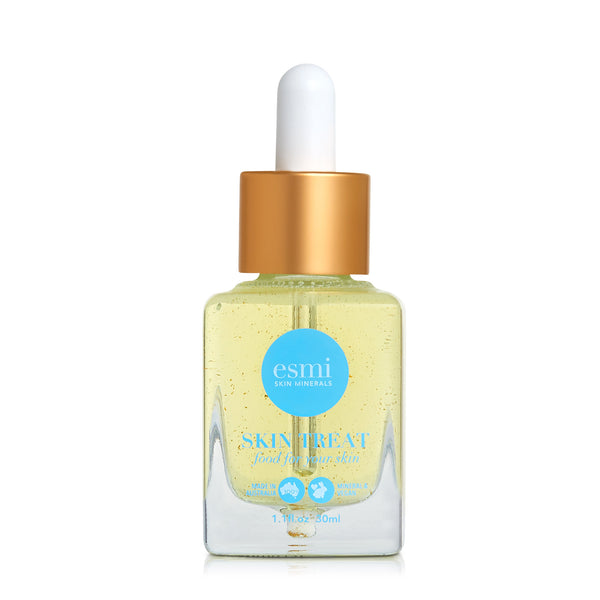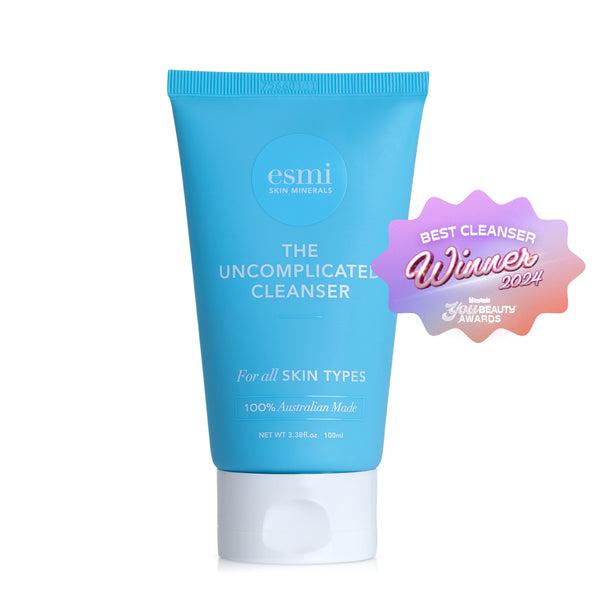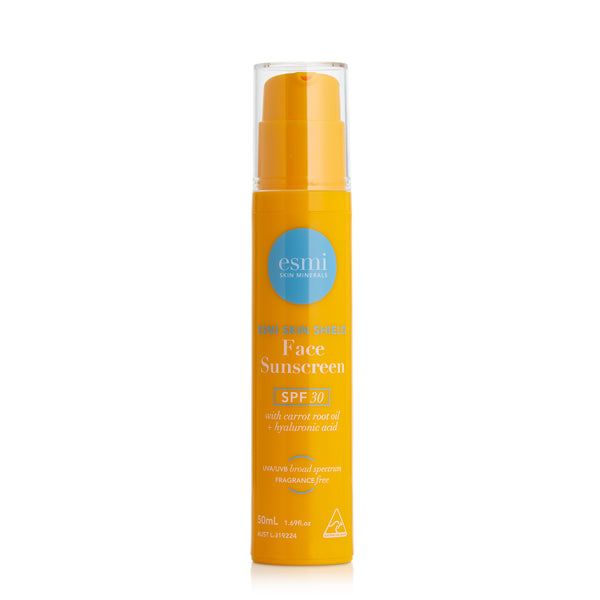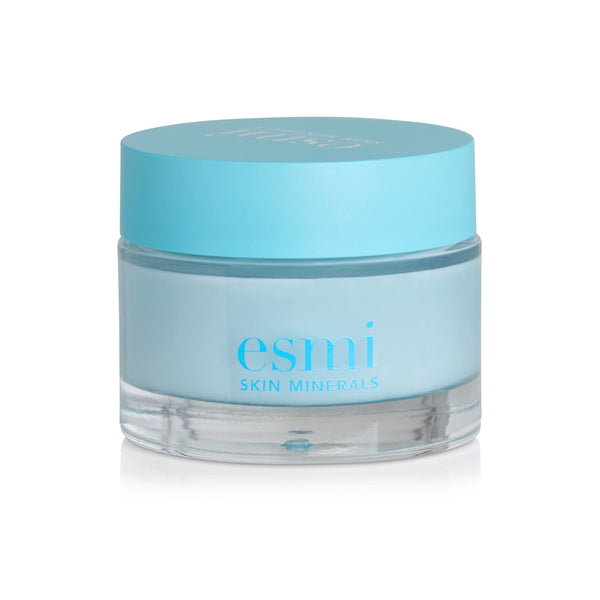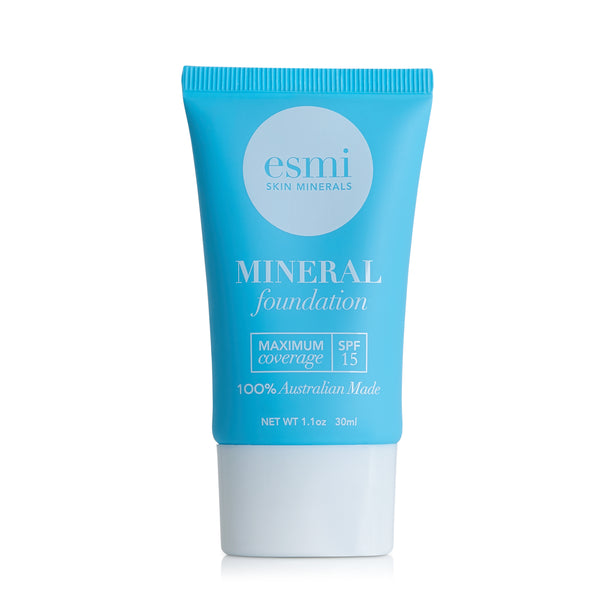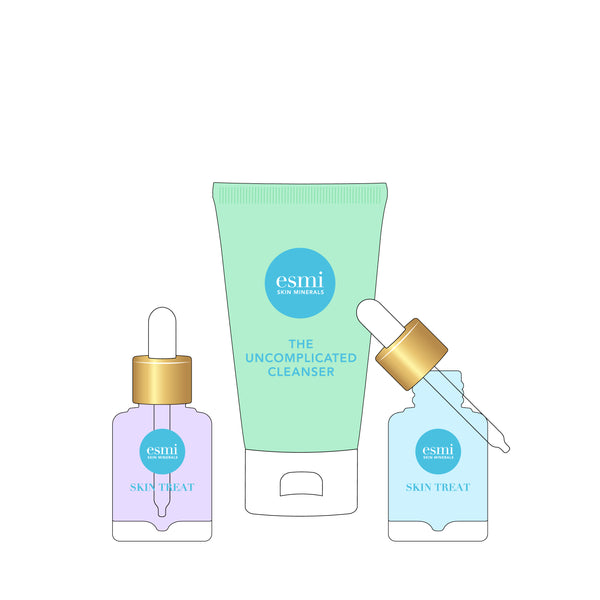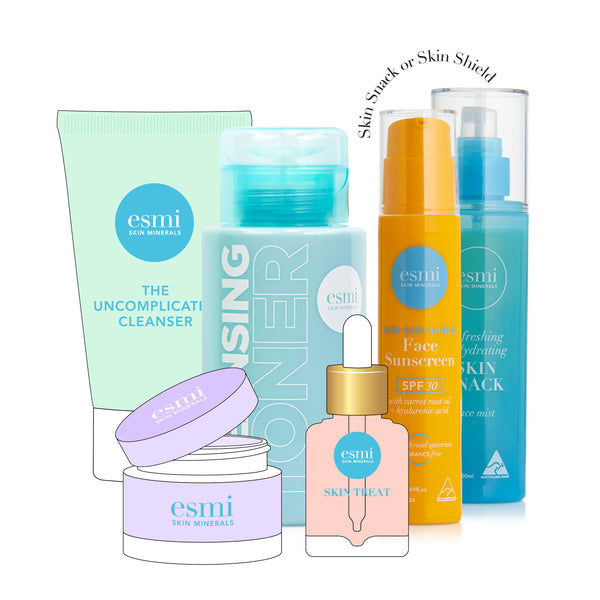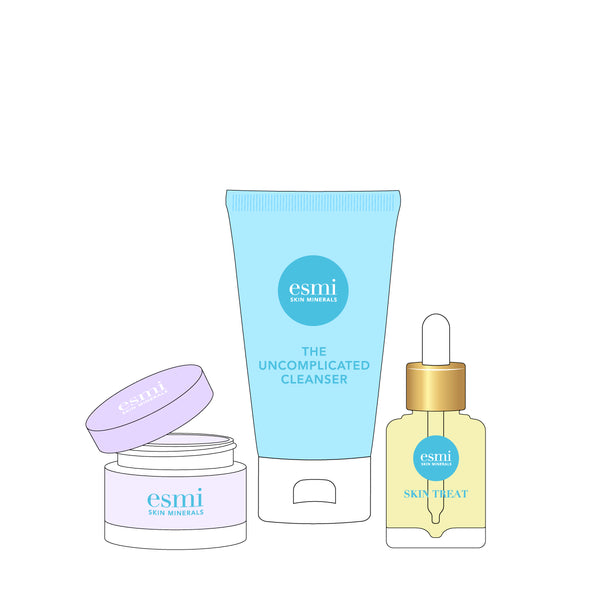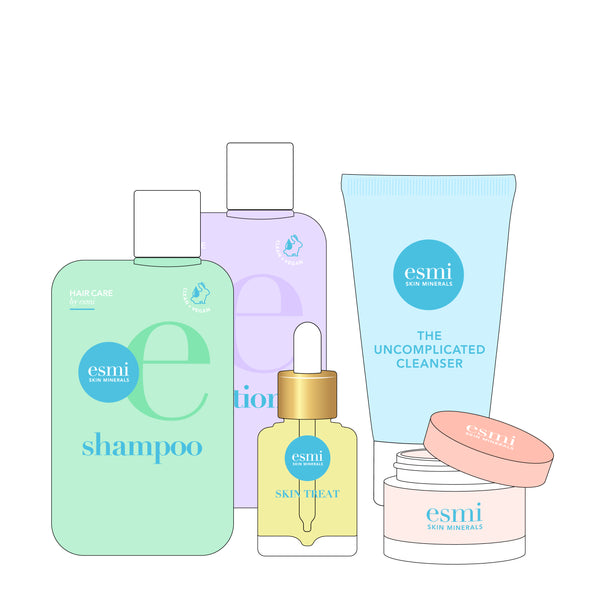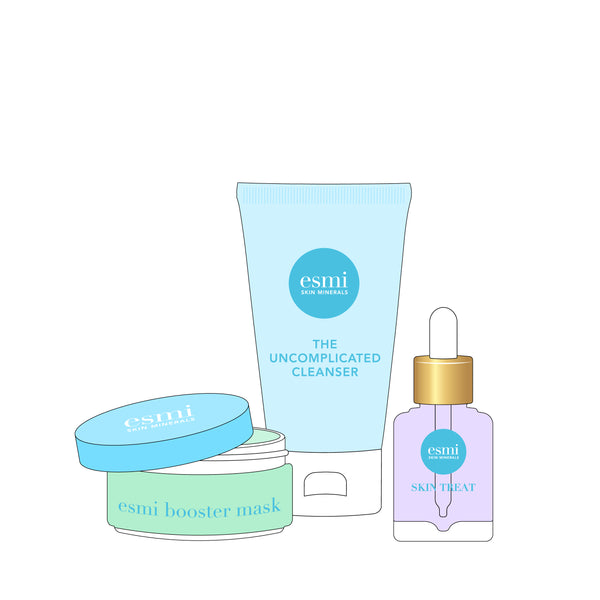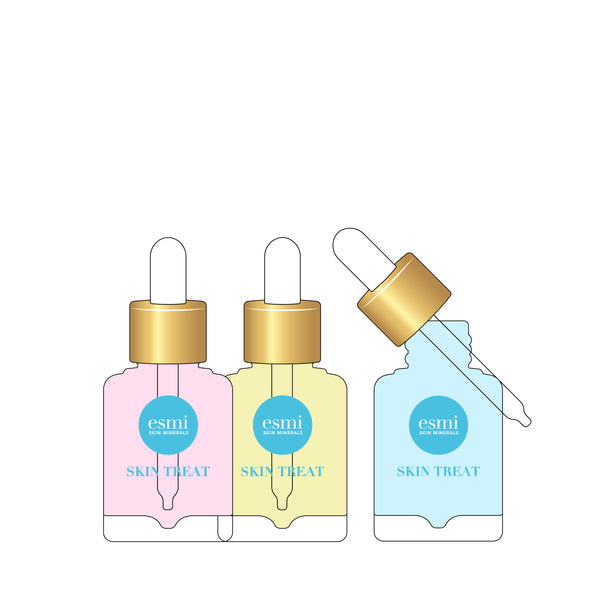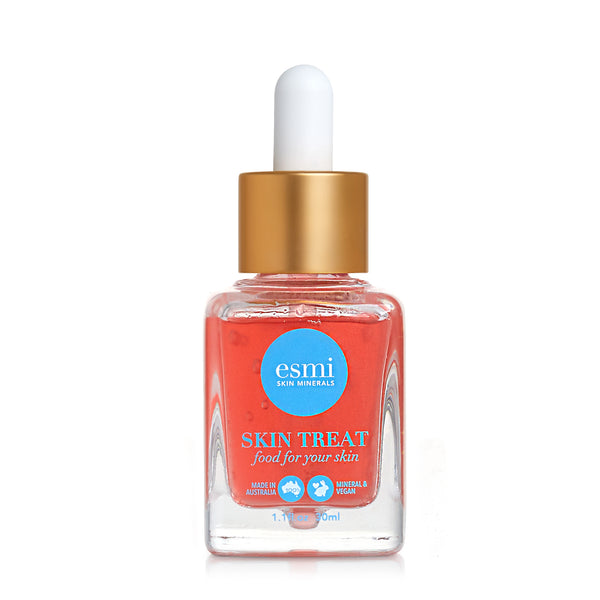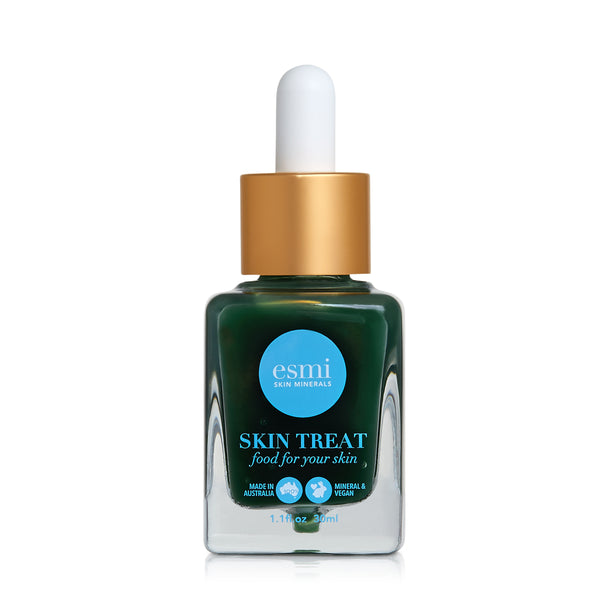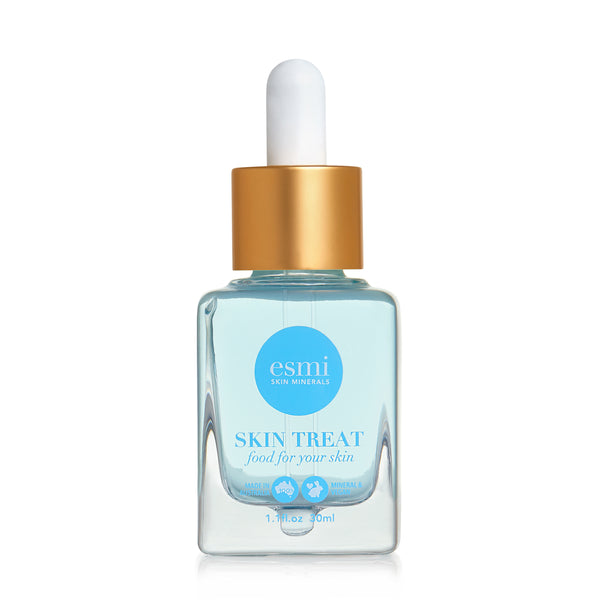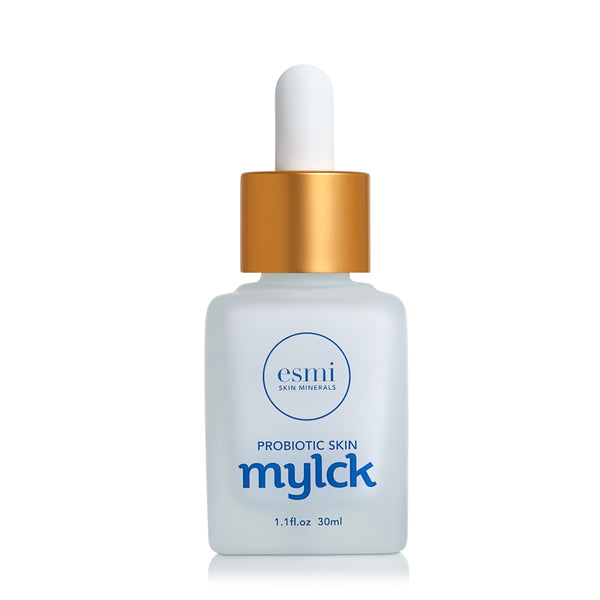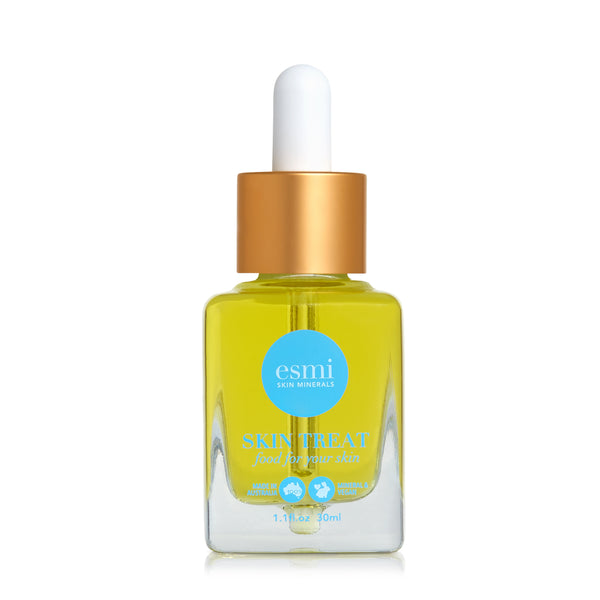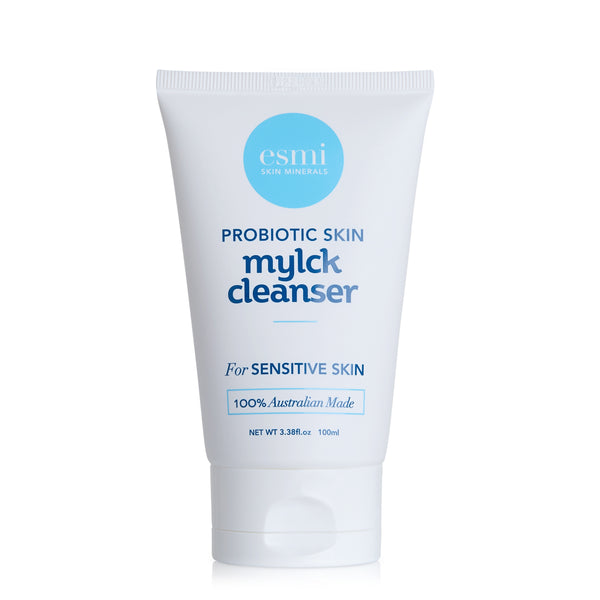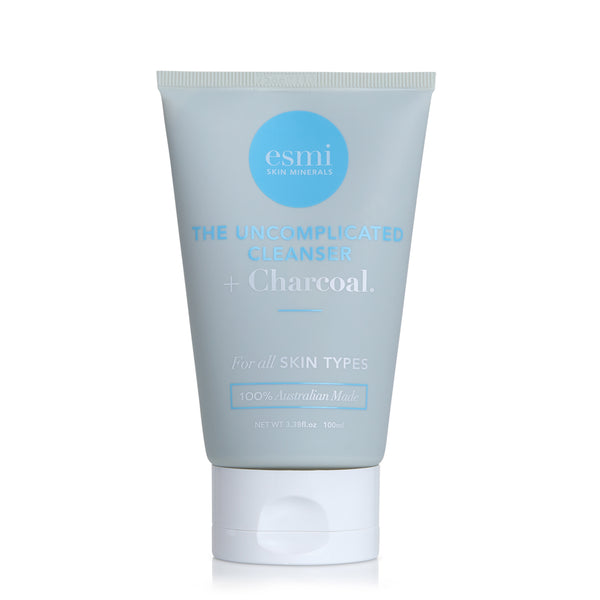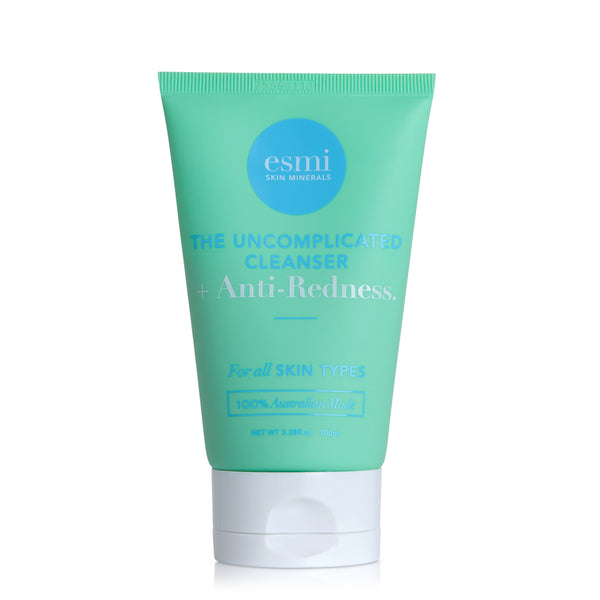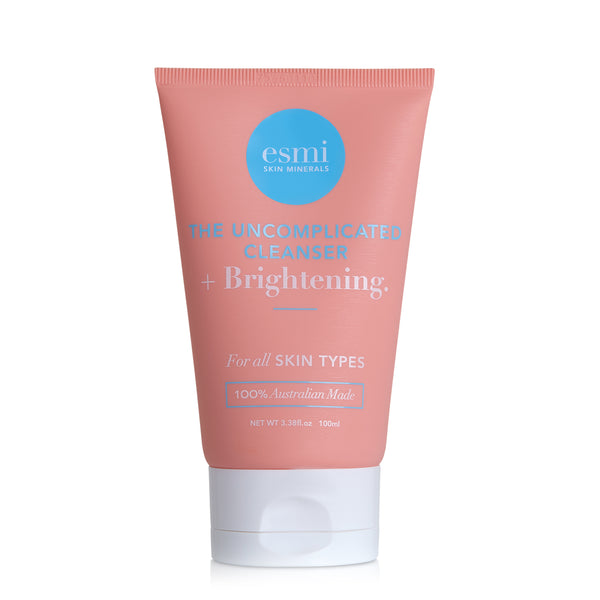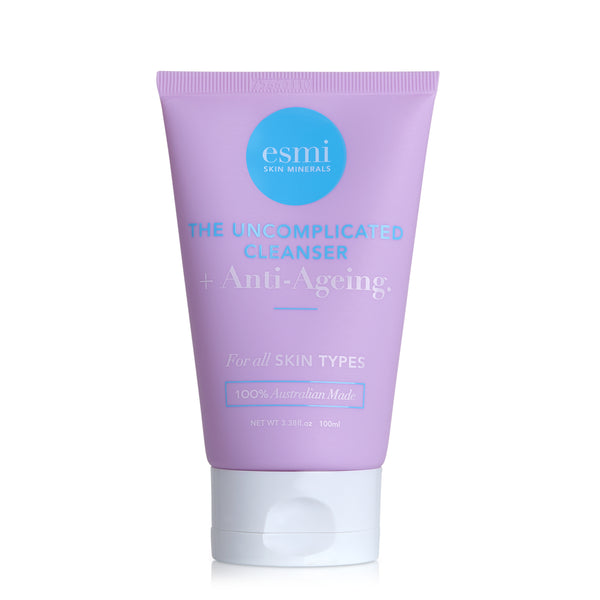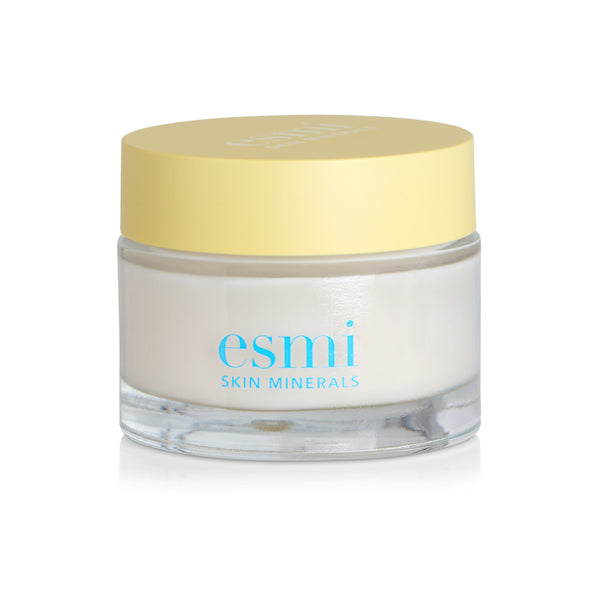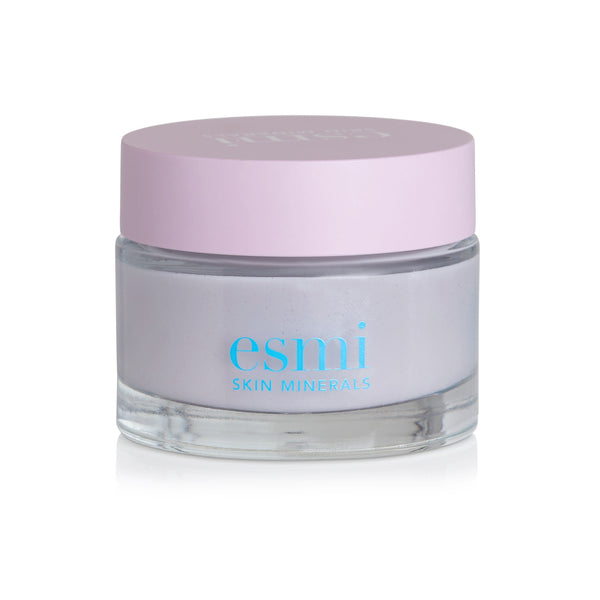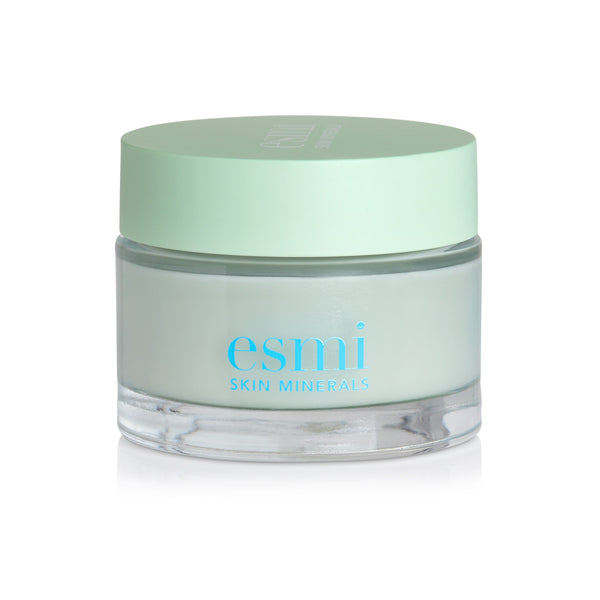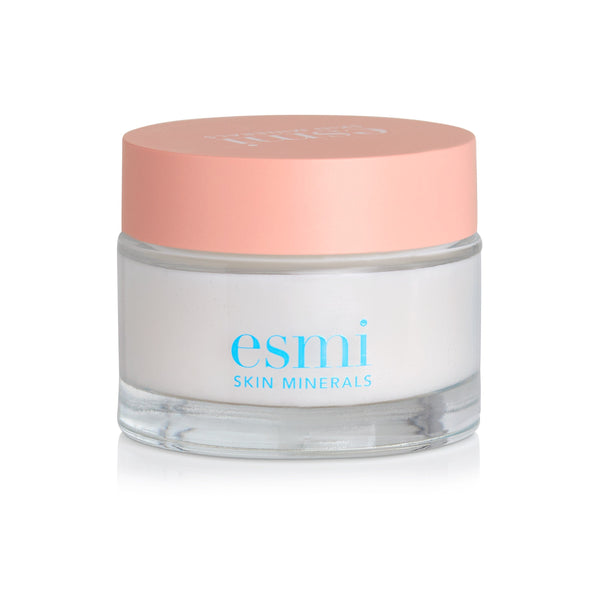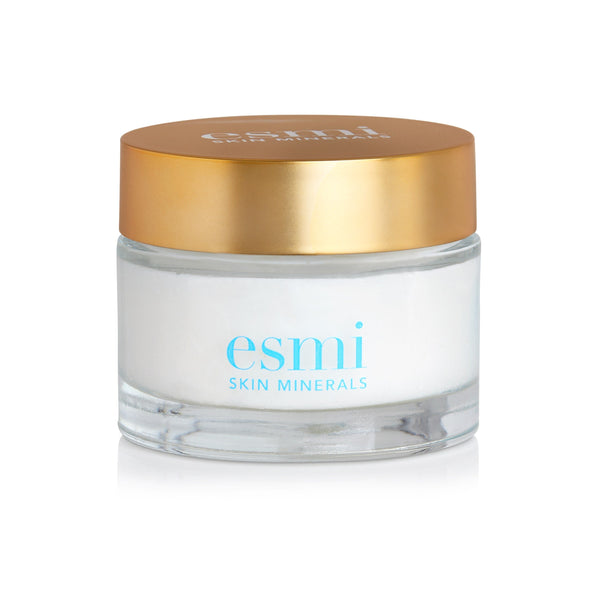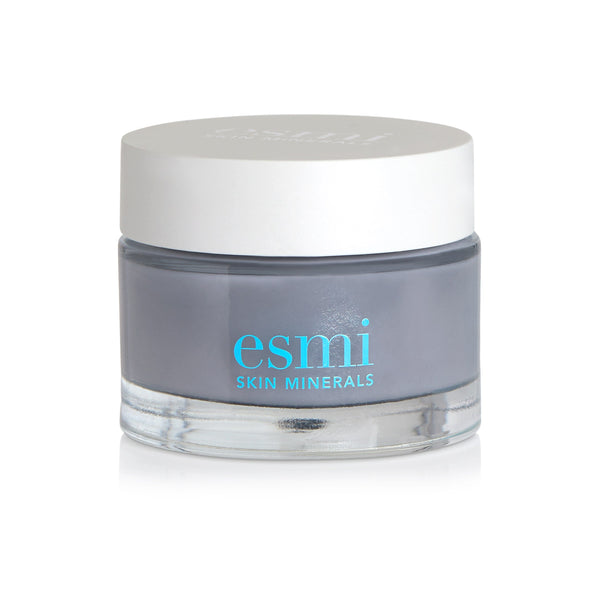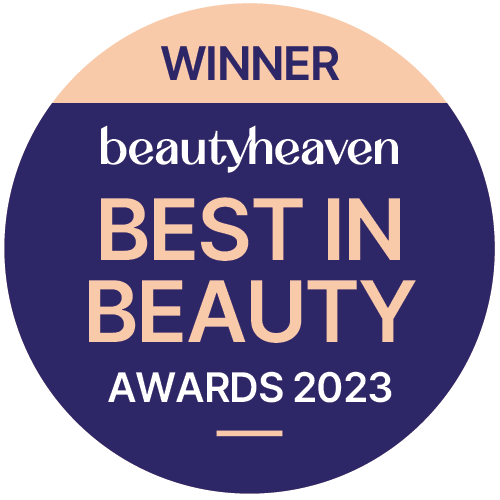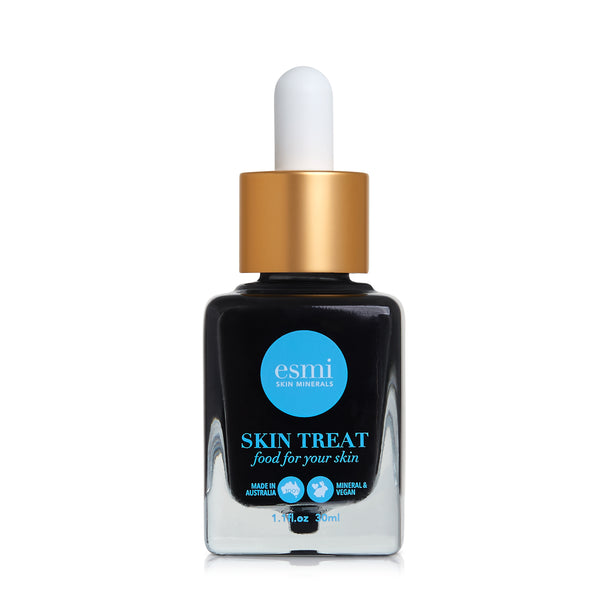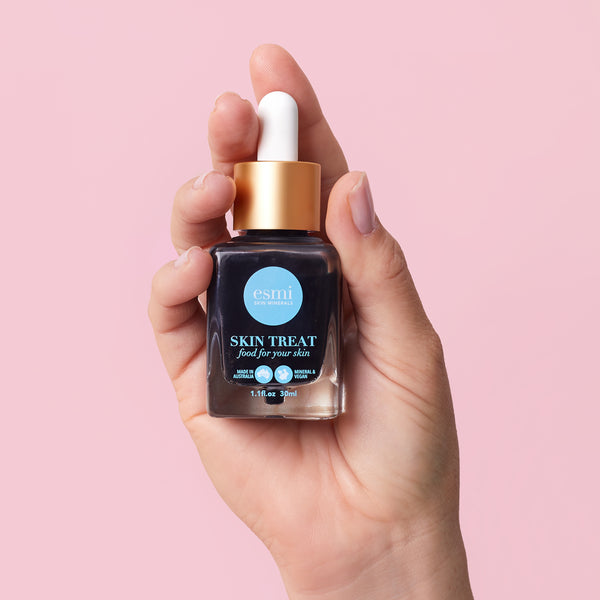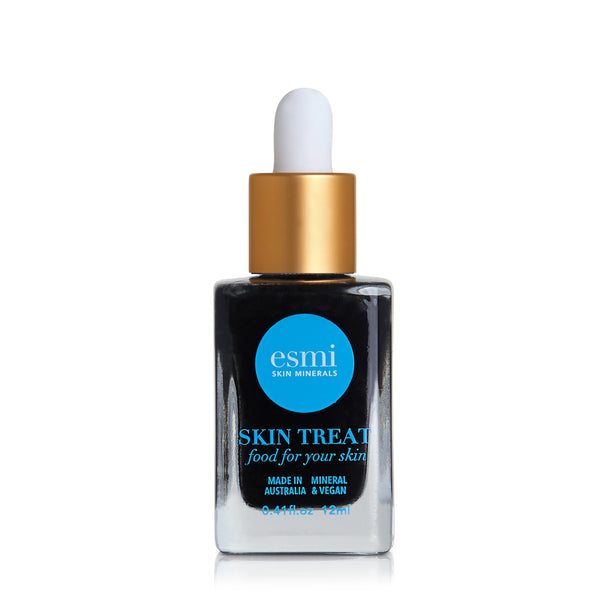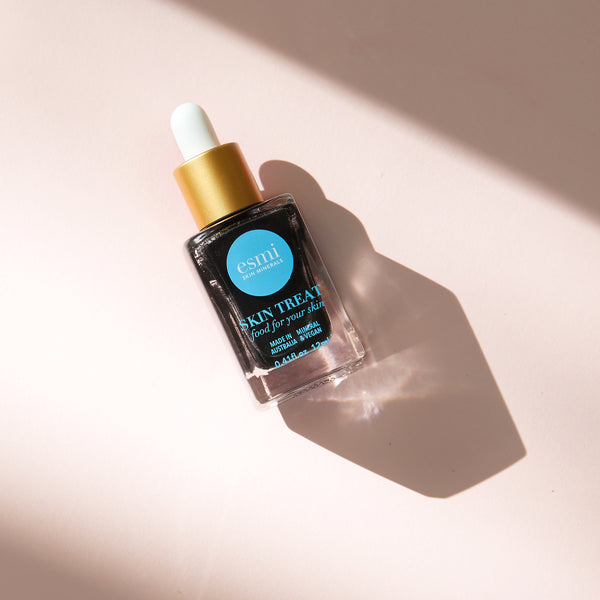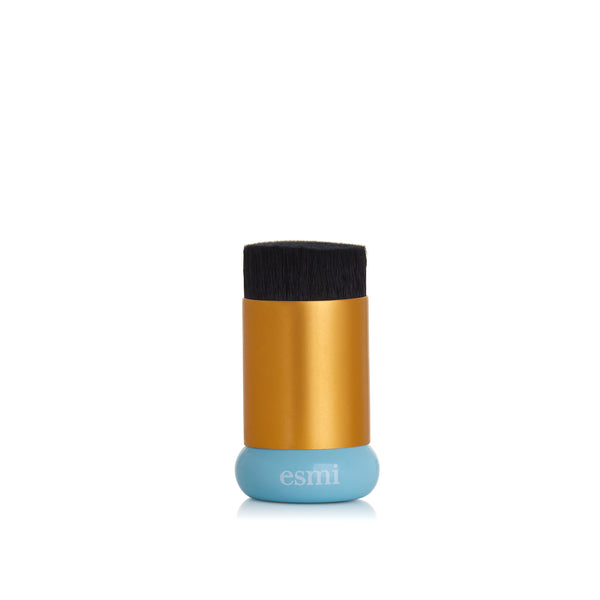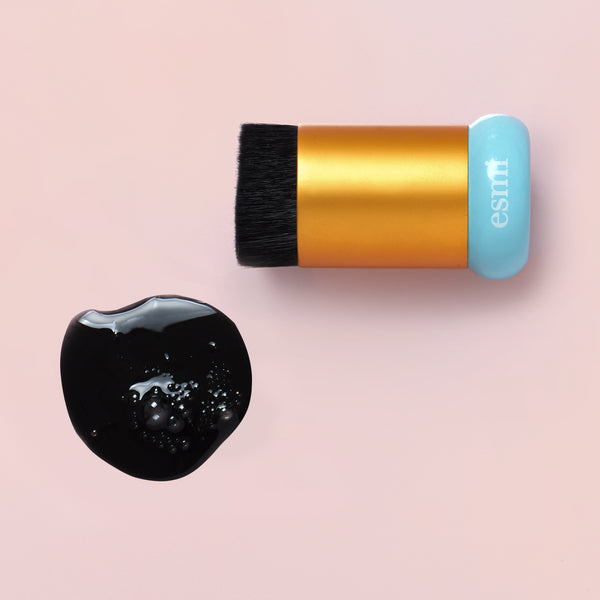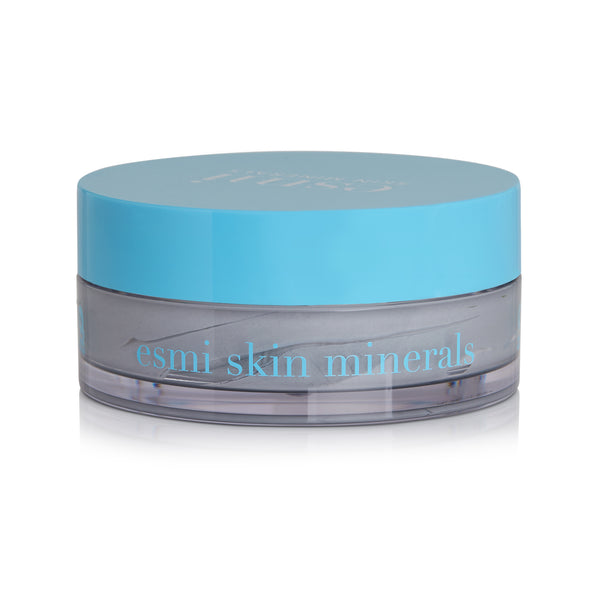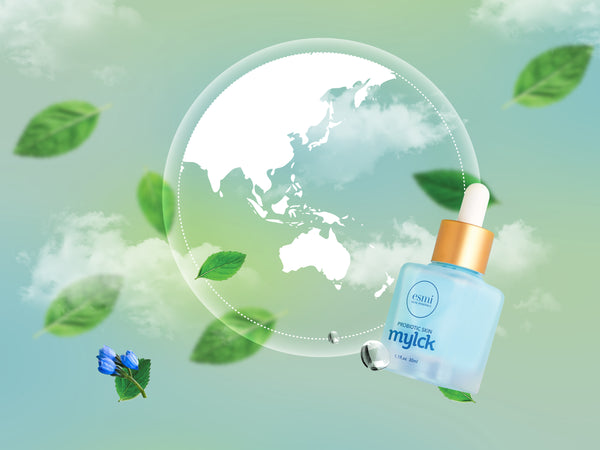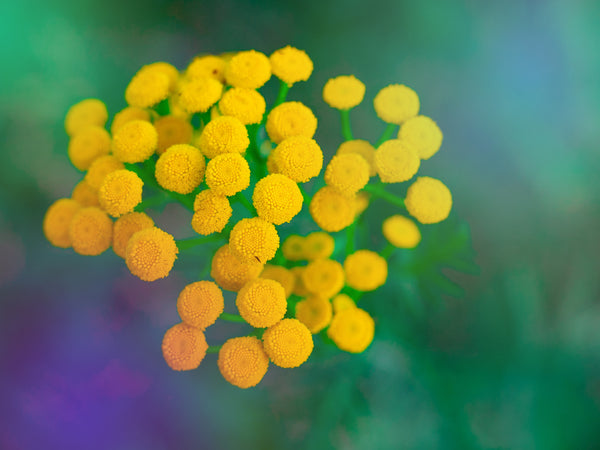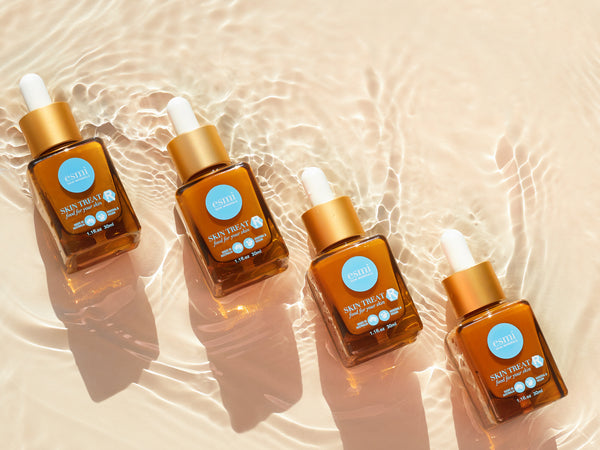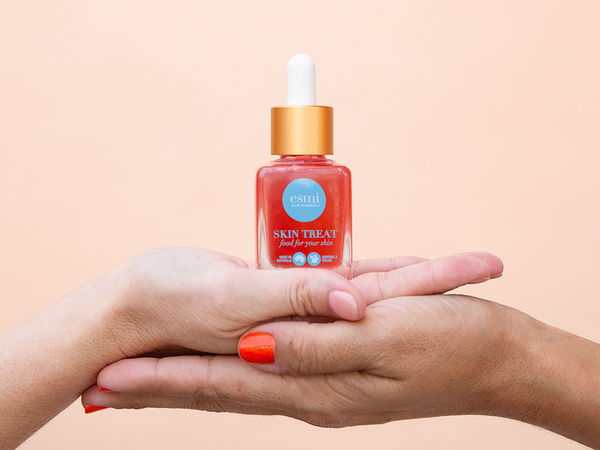Brighter, younger, healthier looking skin? We’d all say yes to that. Exfoliation is to key to a smoother, glowing complexion but it’s a step often neglected in our regular routine.
Let’s take a look at what you need to know about exfoliation and why it’s an essential part of a healthy skincare routine, no matter your skin type.
What is skin exfoliation?
Exfoliation is the removal of dead skin cells from the surface of the outer most layer of your skin; the epidermis. Exfoliation freshens, smooths and brightens skin by combating the effects of ageing and environmental stress which leaves skin looking wrinkled, dull, and uneven.
The life cycle of a skin cell
Let’s get started from the beginning. Our skin naturally sheds dead skin cells through a process called desquamation. The epidermis has five layers and new skin cells are produced in the deepest layer called the basal layer.
The new, springy cells are ‘born’ in the basal layer and travel through the layers of the epidermis. Once the cell reaches the outer layer, the stratum corneum, it settles there and becomes dry and flaky. This is what we call a ‘dead’ skin cell.
Cells are continually pushed up through the layers as new cells are produced. The process of desquamation happens all over your body, not just your face. It’s also known as skin cell turnover.
As we age, skin cell turnover slows down. When we’re young, our bodies are hard at work producing new skin cells rapidly. By the time we hit our 30’s the rate has slowed to around 28 – 45 days and then 45-60 days in our 40’s and 50’s.
As the cell lifecycle slows down and skin ages, dead cells accumulate on the surface, causing the skin to look rough, dry and flaky. Our body produces less collagen as we age too, so skin increasingly becomes thinner and weaker and fine lines begin to appear. The dead skin cells piling up on the outer layer can emphasise the look of these wrinkles and lines.
Environmental stressors
In addition to the decline in skin cell turnover, we’re battling environmental stressors and free radical damage every day that can lead to dry, dull skin. UV rays can be blamed for many signs of premature skin ageing like wrinkles, dark spots and uneven skin tone.
Smog and pollution are other factors that affect the look of skin and if you live in city areas you might be familiar with the skin-dulling effects of pollution.
Benefits of exfoliation
Exfoliation is one of the easiest ways to see major skincare benefits quickly. In the scheme of all things skincare, it can create big results from minimal effort. Here are some great reasons to commit to a regular exfoliation session!
Brighter skin
Who doesn’t want a brighter, lighter complexion! Exfoliating products help you achieve an oh so glow skin tone by removing those dull, old skin cells which are darker than the skin below. Exfoliation also helps thicken the underlying live layers of the epidermis which makes the skin healthier and more radiant looking.
Maximise product absorption
Using a face exfoliator is has the added bonus of boosting the brightening, wrinkle-fighting and moisturising benefits of other skincare.
Without regular exfoliation, the face products in your skincare arsenal won’t absorb properly because they have to fight their way through a layer of dead skin. Removing this barrier encourages maximum absorption, allowing each product to penetrate as deeply into the skin as possible.
Control breakouts
Battling breakouts? Choose the best skin exfoliator for oily, acne prone skin. One cause of breakouts is the bacteria that thrive in the pores when they become clogged with dirt, oil and dead skin cells. The result? Pimples and persistent breakouts. Exfoliation keeps the top layer of your skin fresh, sloughing away the impurities.
While gentle exfoliation can help get breakouts under control, if your skin is overly sensitive, stick to a weekly session and choose an exfoliator for sensitive skin.
Minimise the look of pores
While there’s nothing you can do to actually change the size of your pores, regular exfoliation can definitely make them appear smaller. All kinds of oil, dirt and makeup get trapped deep in pores and it’s this build up that makes them look larger than they actually are. Clear out the gunk and they’ll appear cleaner and smaller.
Instant results
Who doesn’t love a quick skin payoff? Unlike some skin treatments that take a little time to deliver results, we love that the right face exfoliator gives you an instant skin high! It’s a quick way to reveal brighter, fresher skin.
Let’s talk about how to exfoliate your face the right way and the wrong way. Even if you’ve got the best skin exfoliator for your complexion, if you’re not using it properly, your skin will end up irritated, not illuminated!
The do’s and don’ts of exfoliation
DON'T go overboard with exfoliation
It depends on your skin type as to how often you should exfoliate. Oily skin by nature can usually handle more frequent exfoliation sessions than dry or sensitive skin. Start off exfoliating once or twice a week and pay attention to how your skin feels. If it’s becoming blotchy and irritated, you’re overdoing it.
DO be religious about your sunscreen application after exfoliation
Applying sunscreen every day (we repeat; every.single.day!) regardless of the weather really is the golden rule of skincare.
Your skin is particularly vulnerable to environmental and UV damage after you’ve exfoliated so it’s especially important not to skip sunscreen. Use a broad spectrum sunscreen that protects against both UVB and UVA rays.
Do cleanse before you exfoliate
Cleansing to remove makeup and surface impurities first will maximise the effectiveness of your exfoliator. For an easy to use and super gentle cleanser, suitable for all skin types check out The Uncomplicated Cleanser
Don’t apply too much pressure
Your exfoliating your skin, not cleaning a stovetop. Go easy with the rubbing motion or you’ll end up with raw, irritated skin. Exfoliate gently using circular motions.
DO choose the best exfoliator for your skin type
Exfoliators are not always a ‘one size fits all’ kind of deal, be cautious in your selection and use the right exfoliating products in the right places. This also means don’t use a body exfoliator on your face, they’re usually too harsh for the more delicate skin on your face.
DON'T forget to follow up with hydration
Your skin will need a boost of hydration after you exfoliate so don’t forget to apply a moisturiser afterwards.
Chemical exfoliation vs Physical exfoliation
If you’re wondering what the best face exfoliator option is, first it’s important to understand exfoliation can be achieved with two different methods; chemical exfoliation or physical exfoliation. Don’t worry, chemical exfoliation isn’t as scary as it sounds!
Physical exfoliation
The first thing that comes to mind when you think of exfoliation is probably a scrub or cleanser with small, exfoliating particles or granules. These products are a type of physical exfoliant, so too are tools like facial brushes, konjac sponges and face cloths. Microdermabrasion and dermaplaning are also forms of physical exfoliation.
Chemical exfoliation
Chemical exfoliation, on the other hand, is achieved by products that include AHAs (alpha hydroxy acids) and BHAs (beta hydroxy acids). AHAs are water soluble and work on the surface while BHAs are oil soluble which means they can get down into the pore, unclogging and removing the build-up of impurities from deep within.
Common examples of AHAs + BHAs
Glycolic Acid (AHA)
Glycolic acid is an exfoliant that naturally occurs in plants including sugar cane and citrus fruits.
Glycolic acid holds the title for having the smallest molecular structure of the AHAs group. This means your skin absorbs it quickly and it works faster than other AHAs. It can also help treat uneven skin tone, reduce the appearance of pores, combat dullness, fine lines and acne scars.
Lactic Acid (AHA)
A sensitive skin hero, lactic acid is the gentler, yet effective, exfoliator of the acids group. It’s a great all rounder but especially suited to sensitive and mature skin. Lactic acid is detoxifying and more moisturising than glycolic acid while still sloughing off dead skin cells to reveal a radiant, smoother complexion.
Salicylic Acid (BHA)
Salicylic acid more oil soluble than AHAs. This means while it exfoliates the surface of the skin, it also gets down deeper and unclogs pores, removing the build-up of sebum and impurities. Salicylic acid is one of the best skin exfoliator options for acne prone skin as it regulates sebum secretion and is an anti-inflammatory working to calm angry skin.
Our Detoxifying Exfoliating Charcoal Serum is a skin game changer and contains a blend of lactic and Glycolic acid. This powerful duo works together to slough away dead skin on the surface, reducing the appearance of blackheads and drawing out impurities.
Not sure where to start? Talk to our skin specialist team who will guide you through your FREE personal Skin Care Plan and help you get on top of your skin concerns today. The team at esmi are always here to support you on your skin journey.
CHAT: www.esmi.com.au
EMAIL: skin@makeupcartel.com.au
PHONE: 1300 66 11 76
